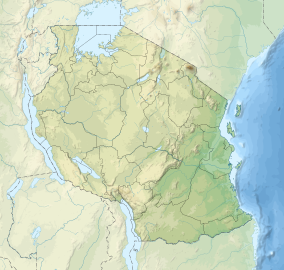Selous Game Reserve, Tanzania
| Selous Game Reserve | |
|---|---|
|
IUCN category IV (habitat/species management area)
|
|

Elephants in the Selous Game Reserve
|
|
| Location | Tanzania |
| Coordinates | 9°0′S 37°24′E / 9.000°S 37.400°ECoordinates: 9°0′S 37°24′E / 9.000°S 37.400°E |
| Area | 54,600 km2 (21,100 sq mi) |
| Established | 1922 |
| Type | Natural |
| Criteria | ix, x |
| Designated | 1982 (6th session), modified 2012, endangered as of 2014[update] |
| Reference no. | 199bis |
| State Party | Tanzania |
| Region | Africa |
The Selous Game Reserve is one of the largest faunal reserves of the world, located in the south of Tanzania. It was named after Englishman Sir Frederick Selous, a famous big game hunter and early conservationist, who died at Beho Beho in this territory in 1917 while fighting against the Germans during World War I. Scottish explorer and cartographer Keith Johnston had died at Beho Beho in 1879 while leading a Royal Geographical Society expedition to the Great Lakes of Africa with Joseph Thomson. The Selous Game Reserve was designated a UNESCO World Heritage Site in 1982 due to the diversity of its wildlife and undisturbed nature.
The reserve covers a total area of 50,000 km2 (19,000 sq mi) and has additional buffer zones. Within the reserve no permanent human habitation or permanent structures are permitted. All (human) entry and exit is carefully controlled by the Wildlife Division of the Tanzanian Ministry of Natural Resources and Tourism. Some of the typical animals of the miombo (for example African bush elephants, black rhinos, hippopotamus, lions, East African wild dogs, Cape buffaloes, Masai giraffes, Plains zebras, and crocodiles) can be found in this park in larger numbers than in any other African game reserve or national park.
The area was first designated a protected area in 1896 by the German Governor of Tanganyika Hermann von Wissmann, and became a hunting reserve in 1905.
...
Wikipedia

